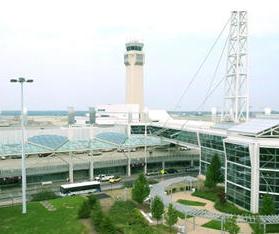|
|||||||||||||||||
|
|
|
|||
|
New ATC Tower At
Cleveland Hopkins International Airport To Create Jobs By Eddy Metcalf |
||||
 |
October 18, 2011 - To a transportation secretary, visiting Cleveland Hopkins International Airport is like visiting hallowed ground. This airport was the United States’ first municipal airfield, opened in 1925, and was home to the world’s first air traffic control tower and airfield lighting system. More recently, it was home to the world’s first direct link between an airport and a regional rail transit system. Yesterday, Raymond H. "Ray" LaHood a Republican politician from Illinois who is currently the United States Secretary of Transportation, who has having served since 2009 joined Federal Aviation Administrator Randy Babbitt in the Forest City to break ground on a new air traffic control tower at Hopkins.
The new tower will serve the more than 194,000 aircraft
arrivals and departures at Hopkins every year and its
radar will manage all air traffic within a 30-mile area
around greater Cleveland. |
|||
|
As
Administrator Babbitt said, “The new location for the Cleveland
tower gives controllers a better view of airport operations and
will ensure that they are prepared for the future of air traffic
control.”
“Projects
like CLE’s new tower, which will create 100 construction jobs,
are a big reason why I’ve been so excited about the American
Jobs Act. As soon
as Congress passes this legislation, we can put $1 billion to
work reducing travel times and delays while improving safety
through further investments in NextGen” said LaHood. “With $2
billion to invest in projects like modernized runways, taxiways,
and terminals, we can also put construction workers back on the
job upgrading airport facilities. “This is the country that built the first air traffic control tower, airfield lighting system and direct airport rail link. This is the country that pioneered many, many other innovations in roads, rails, and transit, the kinds of innovations that made American commerce and prosperity possible. “But the reality is that we’ve fallen behind on the maintenance needed to help keep America's economy competitive. In the 1800s, an earlier generation left us the Transcontinental Railroad. In the 1900s, the generation before mine left us the Interstate Highway System. Today, at the very least, we owe our children and grandchildren a legacy of transportation that continues to move parts, products, and people safely and efficiently. |
||||


